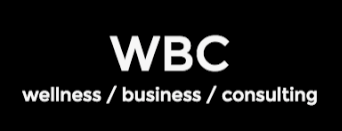When he first became a business leader, admits Krister Ungerboeck, CEO of Courageous Growth, in St. Louis, Mo., he was a bit of a jerk. “I assumed that the CEO should be the smartest person in the room,” Ungerboeck told me recently via email.
That was a mistake, Ungerboeck now cknowledges. Thanks to that mentality, he says, he tended to lead through criticism, he says. And that in turn led him to doubt the abilities of his team, and created an unproductive work environment.
But after receiving less-than-stellar feedback on an employee survey, Ungerboeck says he realized his leadership style wasn’t working. “When I finally realized that my leadership style left my employees struggling to feel inspired, I made a major transformation,” he wrote. “I learned that criticism is lazy leadership that is intended to pump up the ego of the boss by making the employee feel smaller.”
Since that epiphany, Ungerboeck has tried to do better by leading through encouragement. In fact, he now refers to himself as a “recovering a-hole.”
While his employees are now better off for the change, Ungerboeck is hardly the first boss to rethink his or her leadership style. Here are five stories of how other leaders came to realize they needed to do things differently:
Always be learning.
By his mid-20s Glenn Phillips was an award-winning entrepreneur. There was just one little problem: His software company wasn’t making money.
“While we delivered great systems and support, we were not profitable and I was not addressing the problem well,” Phillips told me. “I thought that I was smart enough and hard-working enough to ‘figure it out’ and solve our issues.”
Eventually, though, Phillips realized he needed help. “I started educating myself about running a business,” he said. “The education included peers, classes and lots of reading. I studied businesses, cognitive thinking, sales, capital and more.”
Soon, his business began to turn around. Today, as the head of Lake Homes Realty in Pelham, Ala., he says he makes continual learning a priority for everyone at his organization. He says he hosts regular lunch-n-learns at the office and leads in-person trainings. The company even has a reading library, and if an employee finishes one of the books, Phillips takes that individual out to lunch to discuss what was learned.
Leadership takeaway: Set a good example for employees by constantly seeking new knowledge. This will ensure that your entire company will always be learning and improving. Tools like Workramp can help your team reach its potential.
Accept your new role.
When Rachel Beider, CEO of Massage Williamsburg + Massage Greenpoint in Brooklyn, N.Y., set out to expand her business, she quickly saw she was spreading herself too thin.
“I was trying to do too much, including still seeing massage therapy clients directly, and being involved in the day-to-day tasks,” she told me recently through email. “I started to feel perpetually stressed and burned out, and I knew I wasn't giving my best to the position.”
That’s when Beider set a deadline for herself so she couldn’t make excuses and put off the change. “Though it was a scary transition, it has allowed me a lot more time to work on important things and see the bigger picture," she wrote. "I had to learn to delegate. Now, I'm a lot more 'present' at work, with less on my plate, and open to more suggestions on improving the company.”
Leadership takeaway: First-time CEOs often need time to adjust to their new responsibilities. And it can be hard to give up old tasks that feel comfortable. But, as a leader, it’s important that you step up and accept the fact that it’s time to stop spending energy on things others can do, and focus on running the organization.
Be adaptable.
“When I had five or six employees, I managed them all the same,” Beck Bamberger, founder of Bam Communications, in San Diego, Calif. said in an email.
That worked for a while, she said, but once the company grew to dozens of employees, she saw she’d have to adapt. “There was one particular client meeting where I noticed a highly independent, quiet but well-liked employee was not taking my feedback as well as a bubbly, vivacious employee,” Bamberger went on to say.
What he told her, though, just didn’t seem to click. “We had this awkward pause in the meeting where we sat in silence for nearly 20 seconds before we started (thankfully) laughing. Then I said, ‘Okay, you're different from her.’ This was a little a-ha moment for me in terms of leadership that was adaptable for each individual.”
Leadership takeaway: Not every employee responds the same way to the same leadership style. Great leaders recognize each individual’s needs and adapt accordingly. This ensures that every employee can perform at his or her best.
Think quickly.
“A few years ago, when my companies were just starting out, my employees or potential business partners would ask me questions, and I would let them linger for a long time rather than answering them right away,” said Tony Jakstis, founder of Casa De Lago Event Centers, in Orange, Calif.
Not wanting to make a bad decision, Jakstis took his time coming up with the best answer. But, sometimes, stalling can mean missing out on big opportunities. “A good leader needs to be able to hear any kind of problem or opportunity and make a key decision that will benefit the company,” Jakstis said. “If it fails and something goes wrong, then at least I’ll find out quicker. If I’m right, the job will be done.”
Leadership takeaway: Don’t be afraid to be decisive. Even if a decision doesn’t turn out as planned, see that not as a failure, but a chance to learn.
Find support.
Danielle Wiley, CEO of Sway Group, in Corte Madera, Calif., never wanted to be a leader, she says. Nonetheless, she found herself at the helm of a fast-growing company.
“With the rocketship success that Sway saw in its first few years, my own personal leadership growth couldn't keep up,” she wrote in an email. “We were no longer a small company, but one that 35 employees' livelihoods depended on.”
The weight of that responsibility led Wiley to isolate herself -- and her team to suffer as a result. “I knew I needed to do better, I just didn't know how,” she told me.
Around this time,the executive attended a dinner for women executives. She was at the same table as a woman who kept talking about a CEO advisory group that she had joined. Wiley decided to give the group a go.
“At my first meeting, I quickly realized this group was exactly what I needed," she said. "I began to see that my concerns and frustrations were the same other CEOs were experiencing. The group gave me a newfound sense of confidence and direction that I was able to bring back to the team.”
Leadership takeaway: Being a CEO is an experience unlike anything else. Finding others going through similar situations can provide much needed support and guidance.
Article on Entrepreneur










